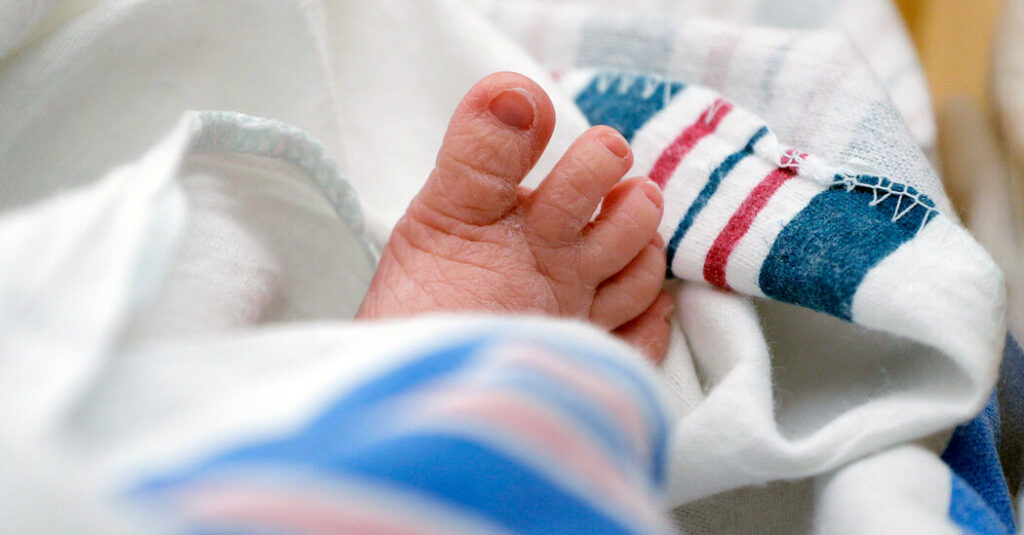In 2024, the number of births in the United States rose by only 1 percent, remaining close to the historically low levels that have concerned demographic experts and become a key focus of the Trump administration’s social agenda, as reported by the Centers for Disease Control and Prevention on Wednesday.
Last year saw over 3.6 million babies born in the U.S., a slight increase from the record low in 2023. The country’s fertility rate is approximately 1.6 births per woman, significantly below the 2.1 births required to keep the population stable through natural births alone.
Ken Johnson, a demographer from the University of New Hampshire, noted that this data reflects the ongoing decline in U.S. births, a trend that has been evident since the Great Recession of 2007.
Experts believe that the persistent drop in birth rates presents challenges for the U.S. economy in the future, particularly as a smaller working-age population supports an increasing number of elderly individuals.
President Trump has advocated for a “baby boom,” aligning with the conservative pronatalist movement that seeks to encourage more Americans to marry and have larger families.
Vice President JD Vance and others in this movement have criticized young Americans who choose not to have children, suggesting they are contributing to a potential demographic crisis due to their low regard for traditional family structures.
One of the factors behind the decline in births is the significant reduction in teenage pregnancies, which has been observed over the last several decades.
Teen birth rates peaked in 1991 at 61.8 births per 1,000 females aged 15 to 19, but this figure fell to a historic low of 12.7 births in 2024.
Throughout the 1990s and into the early 2000s, the fertility rate in America was around two children per woman, a level sufficient to maintain population through births alone, according to Karen Benjamin Guzzo, a family demographer at the University of North Carolina at Chapel Hill.
These figures were inflated by high teen pregnancy rates, setting the U.S. apart from some European and Asian countries that were also dealing with low fertility rates but without the same prevalence of teenage births.
“We were quite unique in that respect,” noted Dr. Guzzo.
Since around the year 2000, greater access to contraception has significantly reduced both unintended and teenage pregnancies, which have been on the decline ever since.
However, following the Great Recession, birth rates among women in their 20s have also significantly fallen. In 2007, there were 106.3 births per 1,000 women aged 20 to 24; by 2024, this had dropped to 56.7. The highest birth rate in 2007 was among women aged 25 to 29, with 117.5 births per 1,000, reducing to 91.4 by 2024.
This decline is not being compensated for by increases in births among women in their 30s.
“A major question is whether these postponed births will eventually happen or if they will be permanently missed,” Dr. Johnson posed. “Are these women planning to have children later, or will many simply choose not to have them at all?”
Recent data implies that some people may be deciding against having children, with Dr. Johnson stating, “While births among older women have slightly increased, it’s insufficient to offset the overall decrease in births.”
Nevertheless, many young Americans still express a desire to have two children. While changing societal attitudes may factor into the decrease in childbearing, demographers highlight the growing challenges faced by those wishing to start families.
Economic challenges—including overwhelming student debt, lack of federal paid family leave, expensive childcare, and unattainable homeownership—combined with a general sense of instability may be significantly influencing Americans’ decisions to delay parenting, according to Dr. Guzzo.
“People are reluctant to have kids when they lack confidence in their future,” she remarked.
Proposals within the Trump administration to encourage higher birth rates include increased financial support in areas with higher birth and marriage rates, a $5,000 “baby bonus” for new mothers, and expanding Fulbright scholarships for married individuals or those with children.
Although some of these initiatives have found support from Democrats advocating for assistance to working families, experts are skeptical that temporary measures will truly boost the birth rate.
Furthermore, Dr. Johnson noted that raising the fertility rate alone is unlikely to restore the population to replacement levels.
“Immigration is also an important factor,” he added. Many immigrants are younger and often move to start families. “Immigrants don’t just come alone—they bring the potential for future babies,” he stated.


